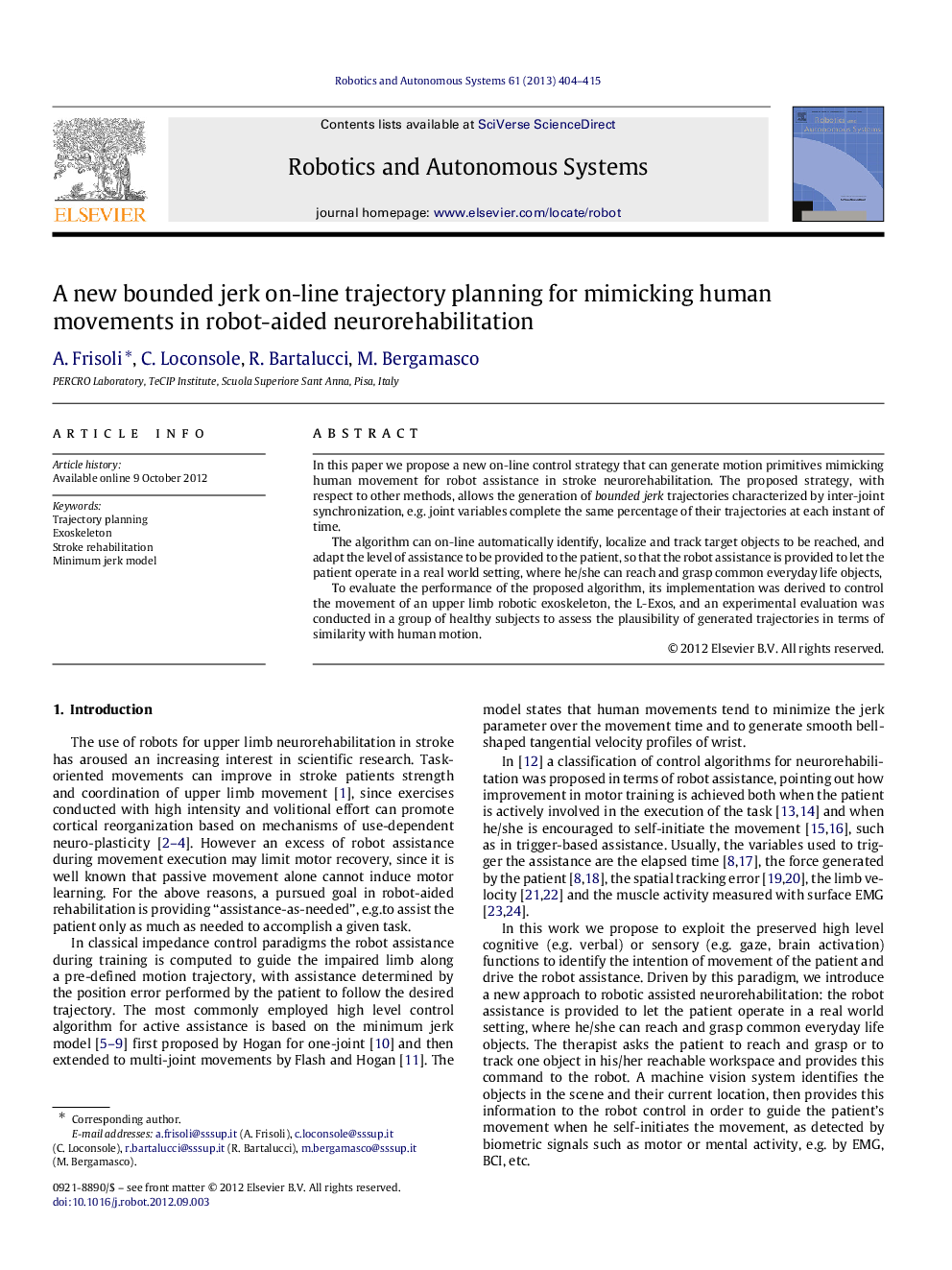| Article ID | Journal | Published Year | Pages | File Type |
|---|---|---|---|---|
| 413113 | Robotics and Autonomous Systems | 2013 | 12 Pages |
In this paper we propose a new on-line control strategy that can generate motion primitives mimicking human movement for robot assistance in stroke neurorehabilitation. The proposed strategy, with respect to other methods, allows the generation of bounded jerk trajectories characterized by inter-joint synchronization, e.g. joint variables complete the same percentage of their trajectories at each instant of time.The algorithm can on-line automatically identify, localize and track target objects to be reached, and adapt the level of assistance to be provided to the patient, so that the robot assistance is provided to let the patient operate in a real world setting, where he/she can reach and grasp common everyday life objects,To evaluate the performance of the proposed algorithm, its implementation was derived to control the movement of an upper limb robotic exoskeleton, the L-Exos, and an experimental evaluation was conducted in a group of healthy subjects to assess the plausibility of generated trajectories in terms of similarity with human motion.
► On-line generation of motion primitives mimicking human movement. ► Bounded jerk trajectories characterized by inter-joint synchronization. ► Robot-assistance provided in a real world setting. ► Experimental evaluation of performance with an active robotic exoskeleton.
